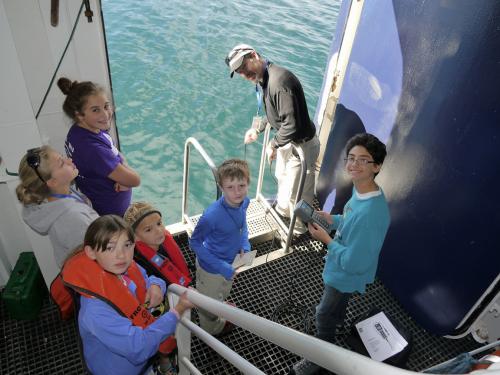
TODAY'S JOURNAL:
In my last post I showed how my partner Joe Super and I deployed a sensor via sea kayak to take some measurements of the water column in a fjord in S. Greenland. We were interested in seeing how the water changed going from the sunny surface down to the murky depths. Ordinarily, oceanographers employ a CTDA research tool that is submerged in the water to measure conductivity (salinity), temperature, and depth. to collect this type of data. CTDs measure Conductivity (to determine salinity), Temperature, and Depth. A CTDA research tool that is submerged in the water to measure conductivity (salinity), temperature, and depth. is a pretty standard piece of gear on oceanographic research ships, but our expedition vessel National Geographic Explorer isn't equipped with one. Lacking an "official" CTDA research tool that is submerged in the water to measure conductivity (salinity), temperature, and depth., Joe brought his digital multifunction water quality meter along so we could measure water temperature and salinity at depths up to 15 meters (almost 50 feet.) Joe's meter also measures dissolved oxygen; He and his high school students use the meter in the Minot, North Dakota to help measure water quality and assist the North Dakota Game and Fish Department by monitoring dissolved oxygen fish kills under the ice in local rivers and lakes.
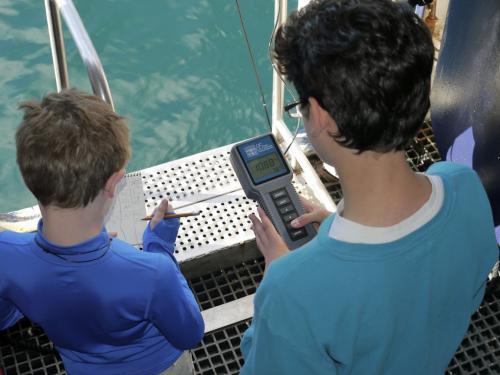
The Explorer has two big waterproof doors that open amidships just above the waterline on the port and starboard sides of the ship called side gates. They are used to board motorized inflatable boats called Zodiacs and for embarking onto sea kayaks. At our moorings we found that one side was generally in use with Zodiacs coming and going while the other stayed pretty quiet, often waiting for the dive team (more on them later) to return from their near-daily SCUBASelf Contained Underwater Breathing Apparatus or ROV explorations. When possible we would do a data run right off the ship through one of the side gates. At a few other times we commandeered a zodiac to grab our data. One rule of polar science: Be creative and willing to improvise!! Below is a summary of the data we acquired while anchored at Qaqortoq, SW Greenland (approx. 60.715597°, -46.036215°) on 24 July 2013.
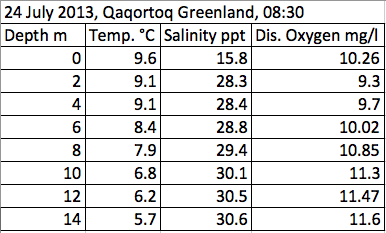
Do you see a relationship in the data between salinity and depth? How about temperature and depth? What other variable did we measure with Joe's multifunction water quality meter?
To visualize several variables at once, there's nothing like a graph. Here we see both temperature and salinity plotted vs. depth at Qaqortoq.
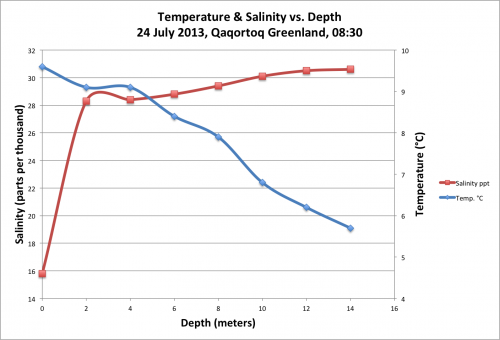
Oh, and one more use of a side gate is for doing a traditional polar plunge!!
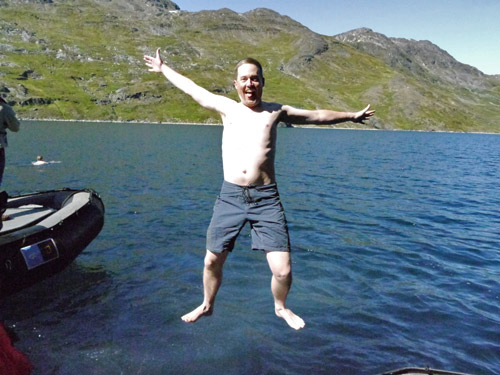
That's all for now! Best- Bill


Comments